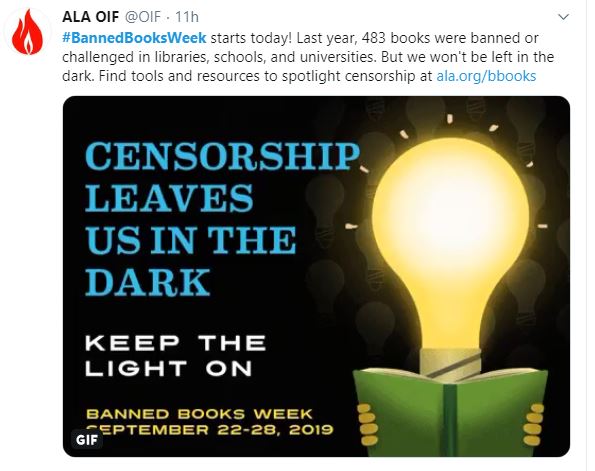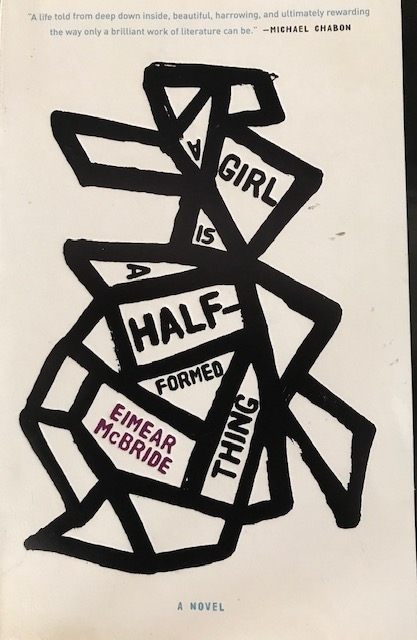Let’s Celebrate!
Banned Books Week is a week for celebrating books. As a writer, I’m naturally an avid reader as well, so I like to think that I celebrate the written word on a daily basis. Even so, I’m always excited when there’s a special slot of time reserved on the calendar for something I love. So: Happy Banned Books Week!

It’s true that the focus of Banned Books Week is on books that have been banned or challenged in some way. That said, a book doesn’t have to have been banned or challenged in order for it to be worthy of celebration. That’s my opinion, at least. So, this week I’m spotlighting some of my favorite books, banned or not. In doing so, I’m also attempting to veer from the more “typical” books (although, to be sure, this is a very subjective judgment). This blog is primarily about different aspects of writing. And if you read this blog regularly, you’re likely a writer. I believe that to be a good writer, you must be a “good” (also subjective!) reader as well. And that, to me, means (in part) to be reading outside of your comfort zone, to be trying something different.
I have lots of favorite authors, many of whom I’d call “standard” favorites, e.g., John Steinbeck or William Faulkner. Authors that are “household names,” in other words. Some of my favorite books, though, often fall outside of the “standard.” A Girl Is a Half-Formed Thing by Eimear McBride (an Irish author) is one of those books–and one of my all-time favorites for its risk-taking and utter brilliance.
A Girl Is a Half-Formed Thing by Eimear McBride
Just over a year ago, a friend recommended McBride’s book to me–I was not familiar with it. I had just written a story draft (which this friend had read) in which I was experimenting with syntax, namely with fragmentary language. From the very first paragraph of A Girl Is a Half-Formed Thing, it was clear to me why my friend had suggested I read it.

The first paragraph of A Girl Is a Half-Formed Thing is as follows:
“For you. You’ll soon. You’ll give her name. In the stitches of her skin she’ll wear your say. Mammy me? Yes you. Bounce the bed, I’d say. I’d say that’s what you did. Then lay you down. They cut you round. Wait and hour and day” (McBride 3).
The first few pages of the novel were, admittedly, a bit difficult to get through, but I eventually adjusted to the writing style. (And, yes, the whole novel reads that way.) Steven Pinker has noted that our brains tend to look for patterns (i.e., in syntax) and for what is familiar. Ellen Bryant Voigt in The Art of Syntax: Rhythm of Thought, Rhythm of Song has noted, too, that in sentences with multiple dependent clauses, our brains naturally search out a main independent clause. This natural (or “automatic”?) search for patterns and familiarity is what helps us make meaning from difficult or unconventional syntactical structures.
Rereading for Meaning
Without giving away any spoilers, I will say that McBride’s book is a heart-wrenching portrayal of a very complex brother-sister relationship. That’s the surface story, at least. There are also strong themes of religion and of struggles of power, especially between males and females. One of the many unique features of this book is that the characters are unnamed, yet the idea of “name” permeates the text.
Rereading this book was, for me, where the real magic happened. I am not a person who usually watches movies more than once. (Truth be told, I don’t watch very many movies at all.) But I’m also not someone who often rereads books. There are, however, many books I enjoy (or would enjoy) picking up again, but there are so many books that I haven’t read a first time that I don’t often reread books unless a lot of time has passed or I’m studying them. With McBride’s book, though, as soon as I finished the novel, I flipped to the first page and began reading again. And I was blown away all over again.
It was much easier to parse meaning the second time, and I was able to extract even more depth from the prose. The novel contains no speech tags (or quotation marks for speech), and often more than one character is speaking in a paragraph. To that end, it can be confusing. But understanding the surface story makes reading the novel a second time a mind-blowing experience, as the story’s many layers unveil themselves. The depth of meaning and symbolism in this novel is absolutely brilliant.
Reading Opens Doors
To be sure, A Girl Is a Half-Formed Thing is not for everyone. While I haven’t found any evidence that this novel has been banned anywhere, if you read the reviews on amazon.com, you’ll see that many rate this book negatively, mostly for the syntactical (and other) experimental factors. The subject matter itself, though, can be difficult. There are detailed descriptions of sexual abuse and violence (both physical and psychological). And because of the writing style, the reader experiences a very close point of view (close psychic distance) to the narrator, as though you (the reader) are in the main character’s head. This is extremely effective–I read the book in about two sittings because I was so incredibly engaged in it. I didn’t want to put it down. But this closeness to the narrator can also be unsettling because of the subject matter.
Reading opens new doors–one can experience worlds different from their own. But reading also opens new literary doors. I had never read a book like A Girl Is a Half-Formed Thing before. Not only did it send me on a quest for other experimental writing, but it also greatly influenced my own fiction writing, which has since become progressively more experimental (although what’s considered “experimental” is subjective). I ended up radically revising that story that led my friend to recommend McBride’s book; the new draft no longer has the fragments that are so reminiscent of A Girl Is a Half-Formed Thing. My story is experimental in different ways now, but it wouldn’t have come into its current form without my having read McBride’s novel.
4 Comments
Joe Artz · September 23, 2019 at 7:46 am
I did the exact same thing with A Girl Half-Formed — started again as soon as I finished. The first time I was caught up in the sheer joy of the language. The second time, knowing the direction of the plot, I was caught up in how she developed the story — the structure, pace, foreshadowing, etc.
Jessica Klimesh · September 23, 2019 at 8:00 am
Yes!! I was just absolutely blown away by her development and layering of the story my second time through–it wasn’t as noticeable the first time around (at least to me). I was (sadly) not as enthralled by her second book (The Lesser Bohemians), but A Girl Is a Half-Formed Thing is certainly a book that will stick with me a long time!
Thanks for commenting, Joe!
Lia Klimesh · September 23, 2019 at 8:07 am
I think the best book I have ever read was William L. Shirer’s “Rise and Fall of the Third Reich.” Being a history buff wasn’t even enough to be able to truly appreciate this book. I’m sure it is banned in some country by now. Written in 1955 by an American journalist living in Berlin, Germany, during the late 1920s all the way through World War II, he was in the unique position of being able to observe the “before”, “during” and “after” of Hitler’s reign of terror across Europe. He stated, quite bluntly, that Hitler’s tyranny succeeded because by the time people realized the true threat, it was too late to stop it. The reader has to have a lot of patience to get through this book, because it is almost too-well written; with excruciating details and various levels of political and social observation, Mr. Shirer wrote what most people in the United States, and in Europe, were afraid to. Hitler happened because Germany allowed him to. People say it was fear that allowed Hitler to prosper, and it was, to a small degree…fear of Communism allowed the Nazi Party to rise, apathy and lack of empathy allowed them to sow absolute terror.
Jessica Klimesh · September 23, 2019 at 9:21 pm
Thanks for sharing!